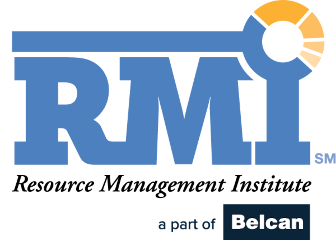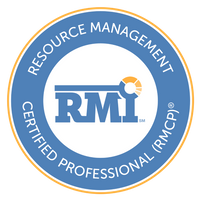By Kristi Gooden, Principal Customer Success Manager at Kantata
A great team is only as good as their level of engagement. And in the professional services industry, where you are selling the expertise of the people you deploy, employee engagement can mean the difference between a business that thrives and one that never lives up to its potential.
And while a business can say they’re committed to better engagement with their employees, a systematic improvement in employee experience is only possible with a real, actionable plan in place. This is where strategic resource management comes into play. Great resource management is about so much more than simply assigning team members to the work your business needs to do day in and day out – when done right, it’s a means of making sure every aspect of a team member’s workday is optimized for the sake of both the company and the employee.
I’ve written in the past about what it takes to create better, faster, and happier teams through the use of skills mapping and flex workforce best practices. In this article I’m going to look at that same mission through the lens of this question: How can a focus on employee engagement make your team better, faster, and happier?
The answer: It all begins with the right approach to resource management.
Staffing vs Strategic Resource Management
Professional services organizations often think of resource management as just the act of staffing projects with the right team members. But great resource management encompasses so much more than resource allocation.
Strategic resource management is an art and a science that provides significant value to businesses. On average, 75% of a service business’ annual spend is for labor, according to the Resource Management Institute. That means every percentage point of a company’s average utilization rate translates directly to a significant amount of revenue. Utilization performance and the financial performance of projects are both directly influenced by the efficacy of a business’ resource management strategy.
Beyond profits, resource management impacts how successful services businesses are in serving the needs of their customers. Happy customers come back for return business and contribute to stronger, more predictable profits. And in professional services, happy customers are not possible without happy employees who are engaged in their work and believe in the mission and vision of their business. Engaged employees and customers are the lifeblood of a professional services business, and an effective resource management strategy will consider the impacts that resource management decisions will have on employee and customer satisfaction.
This is the difference between staffing and strategic resource management. A staffing approach is simply focused on getting work done, with utilization rates, customer satisfaction, and employee retention results being incidental. Strategic resource management keeps all these variables in mind and encourages continual adjustments to the alignment of employees and work in order to systematically improve utilization, satisfaction, and retention.
How Does Your Resource Management Function Impact Employee Engagement?
Resource management processes should be designed to find a balance when considering staffing priorities between the economic needs of the business and wants and career development needs of employees. However, not every business has processes and practices in place that enable them to maintain this balance.
Traditional human resource approaches do not typically address the problem of poor employee engagement in professional services organizations, especially at a larger scale. Often, there is too much dependency on the manager for improving engagement; and he or she often has many other priorities, leading to employees being overlooked in favor of meeting pressing, everyday business needs.
In the past, companies focused on providing perks like modern offices, food, drinks, and various non-monetary, non-career development bonuses that were designed to counterbalance engagement shortcomings. However, the perks approach is not as relevant as it used to be, especially as hybrid or remote work has employees working from home out of the orbit of these office-centric perks.
So what should businesses focus on instead? The resource management function of the business is well suited for helping improve engagement. The fact is many businesses are already equipped with the skills, knowledge, and experience they need to answer that question in a way that makes sense for their workforce – they just need to empower those who own resource management, while also adopting best practices and process and technology optimizations that enable them to better understand employee engagement and make meaningful changes that positively impact team members. The right resource management process can have an exponential positive impact on key drivers that curb turnover, including career development and work-life balance.
Best Practice Example: The Importance of Interlock Meetings
One best practice professional services should look to adopt to drive a more strategic approach to resource management is interlock meetings. Interlock meetings are designed to bring stakeholders together with the goal of achieving better alignment across crucial processes that affect the business. These interlock meetings are critical to information and data sharing, collaborating, and decision-making – when conducted regularly, they can significantly improve the efficacy of resource management practices and ensure that issues that would affect employee engagement and satisfaction aren’t slipping through the cracks between departments. Your human resources, sales, delivery, project management, and finance departments can affect and are affected by the resource management decisions made at interlock meetings, so it is crucial that you include representatives from these departments or that resource managers are consistently engaging with them.
According to a recent survey conducted by the Resource Management Institute, only 35% of professional services organizations have formalized organizational interlock processes focused on the integrity of inputs that contribute to better resource forecasting. Businesses that don’t have formal interlock processes in place should consider holding regular interlock meetings to ensure stronger resource management processes that contribute to positive impacts for all the departments listed above. To stay focused on employee engagement and ensure your business is working toward coordinated improvements, resource management teams should meet with other leaders on a regular basis. What follows is a good cadence for conducting interlocks that align leaders focused on service delivery execution.
Conduct Monthly: Meet with service team management and leadership on a monthly basis to discuss current capacity and utilization, forecasted capacity and utilization, roles that are over capacity, over-capacity mitigation strategy, skills and roles needed for each project delivery type, and refinement of utilization targets.
Conduct Quarterly, at Minimum: Meet with service team executives at least quarterly to discuss current capacity and utilization compared to target, forecasted capacity and utilization, current user skills, and hiring strategy, and to review utilization targets. Once your staffing and allocation model is built, it is important to revisit the numbers quarterly. Add new models for any new service delivery types and adjust current models based on history, with a focus on the level of effort needed by role contributing to the definition of new models.
When reviewing these approaches to improving employee engagement through resource management, ask yourself (and your fellow leaders) the following questions:
- How heavily involved is resource management in our organization’s employee engagement?
- Are the right interlocks in place with engagement-related intel?
- Is your resource management strategic or is it just focused on staffing current and upcoming work?
- Is there a clear charter in place for resource management and are you investing at the right level in the function?
Understanding where you are currently at with your commitment to improving employee engagement and continuing to revisit these questions as you make changes will help you make improvements that last.





